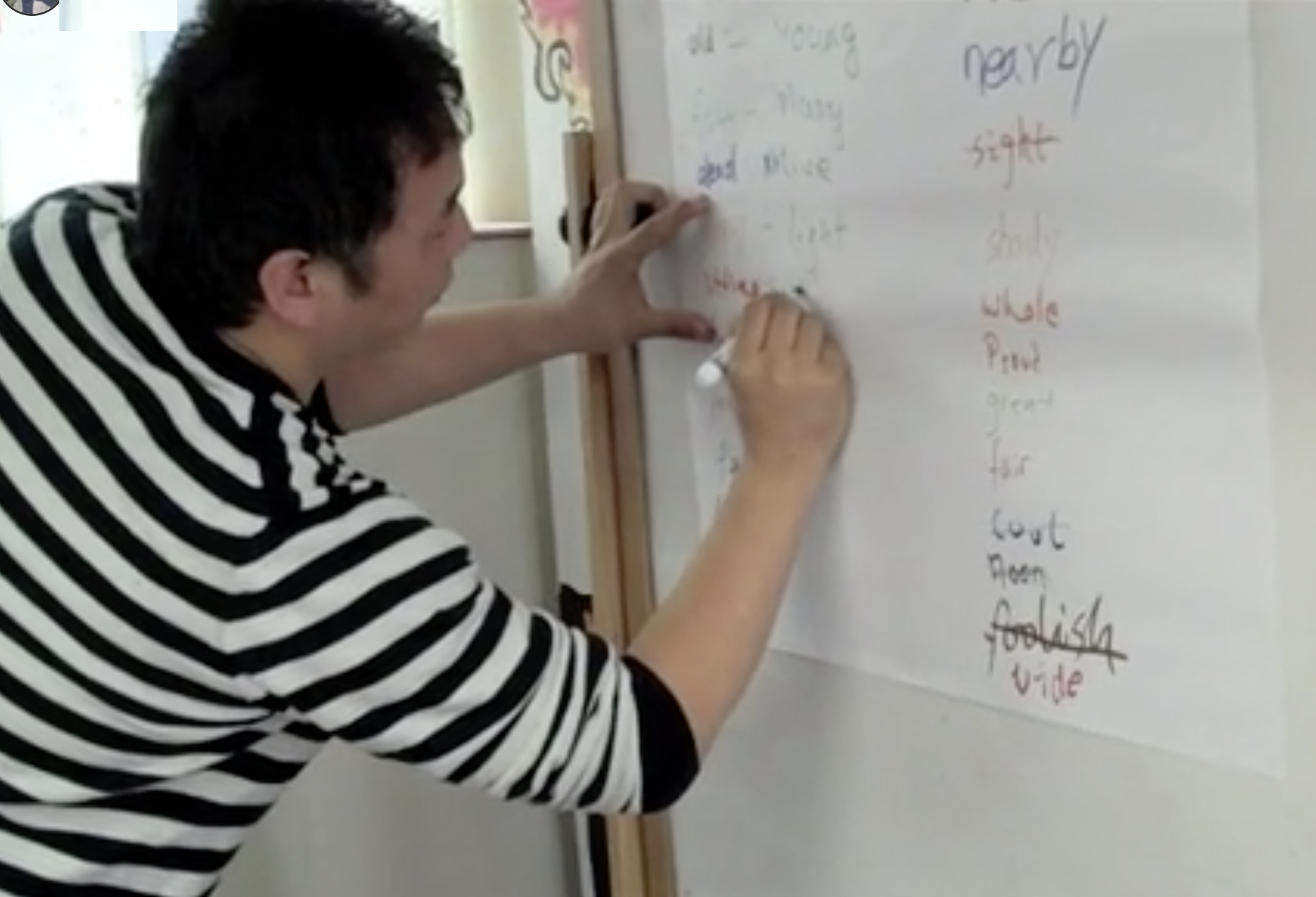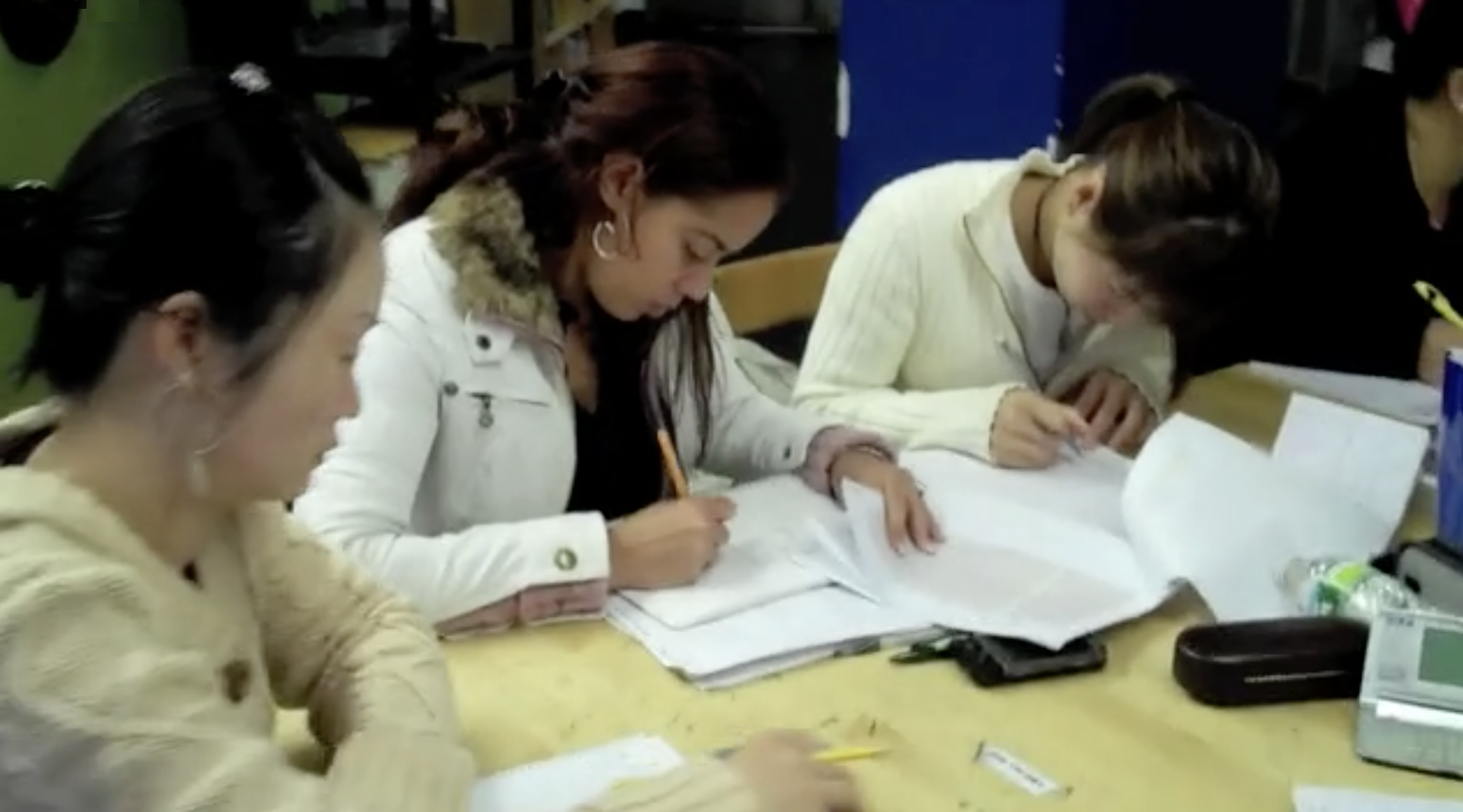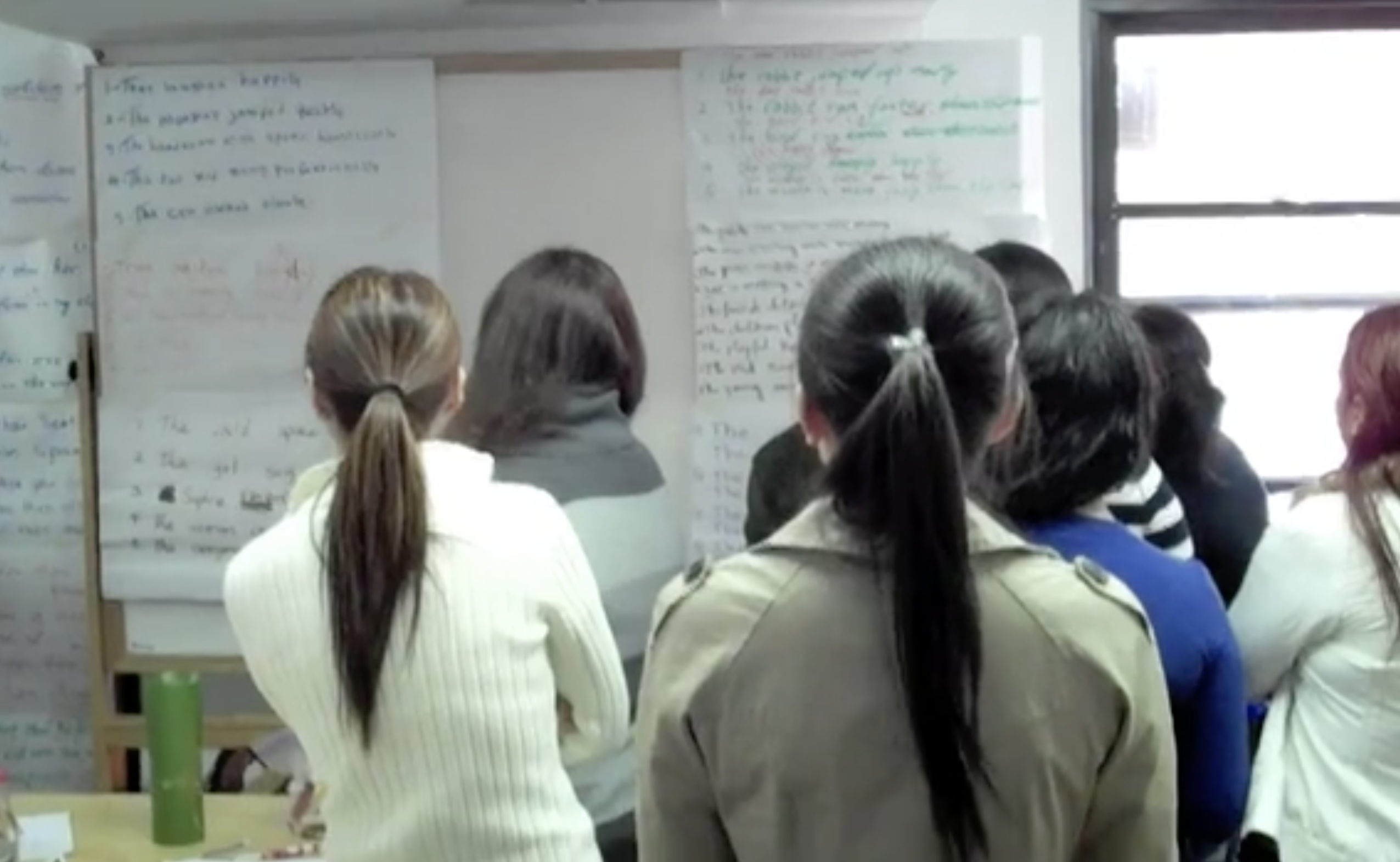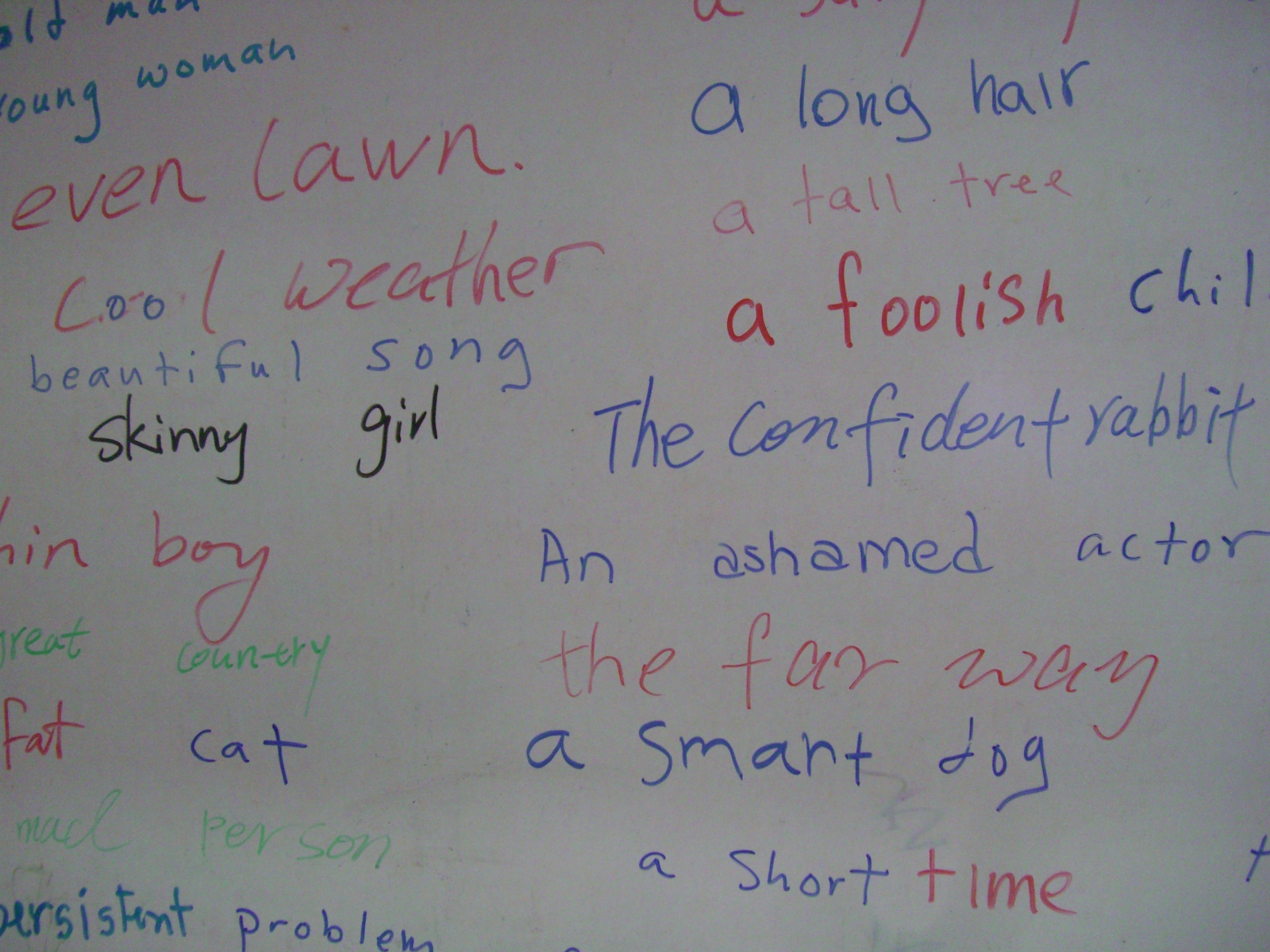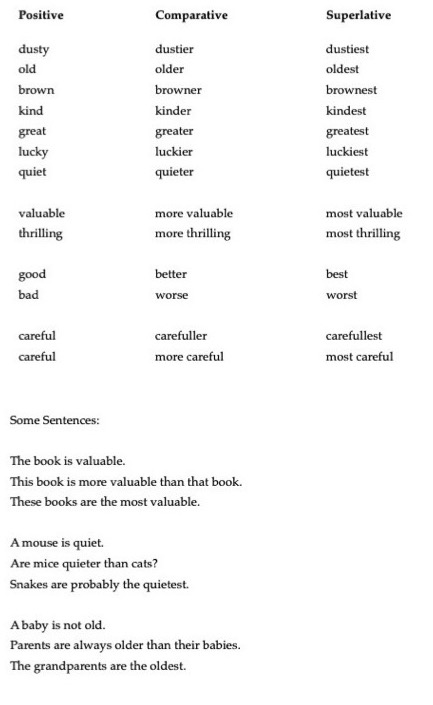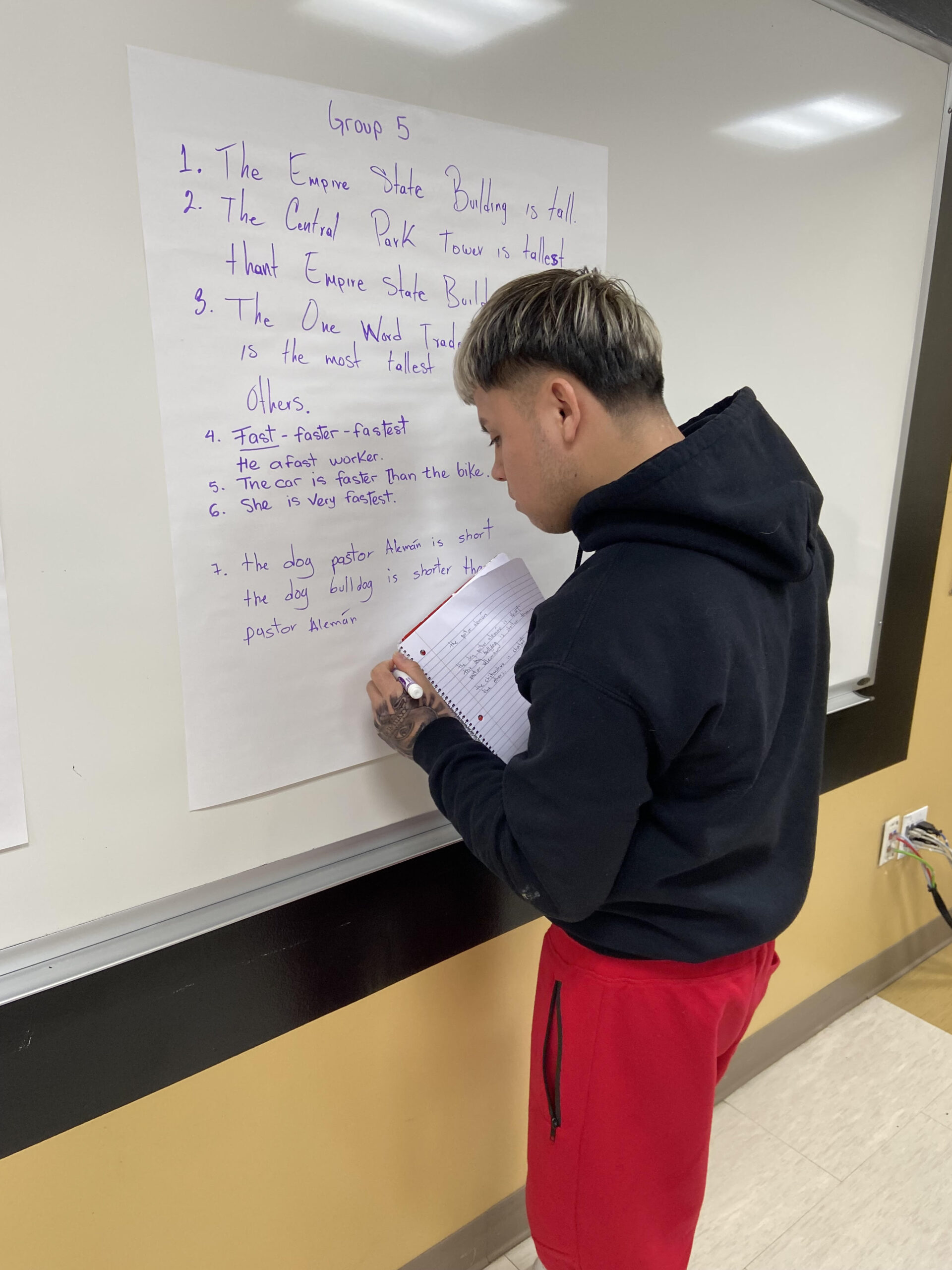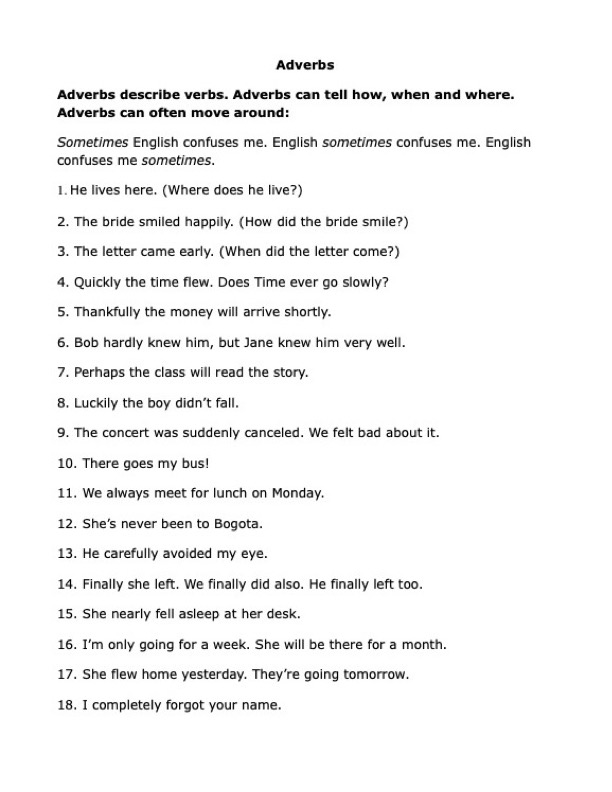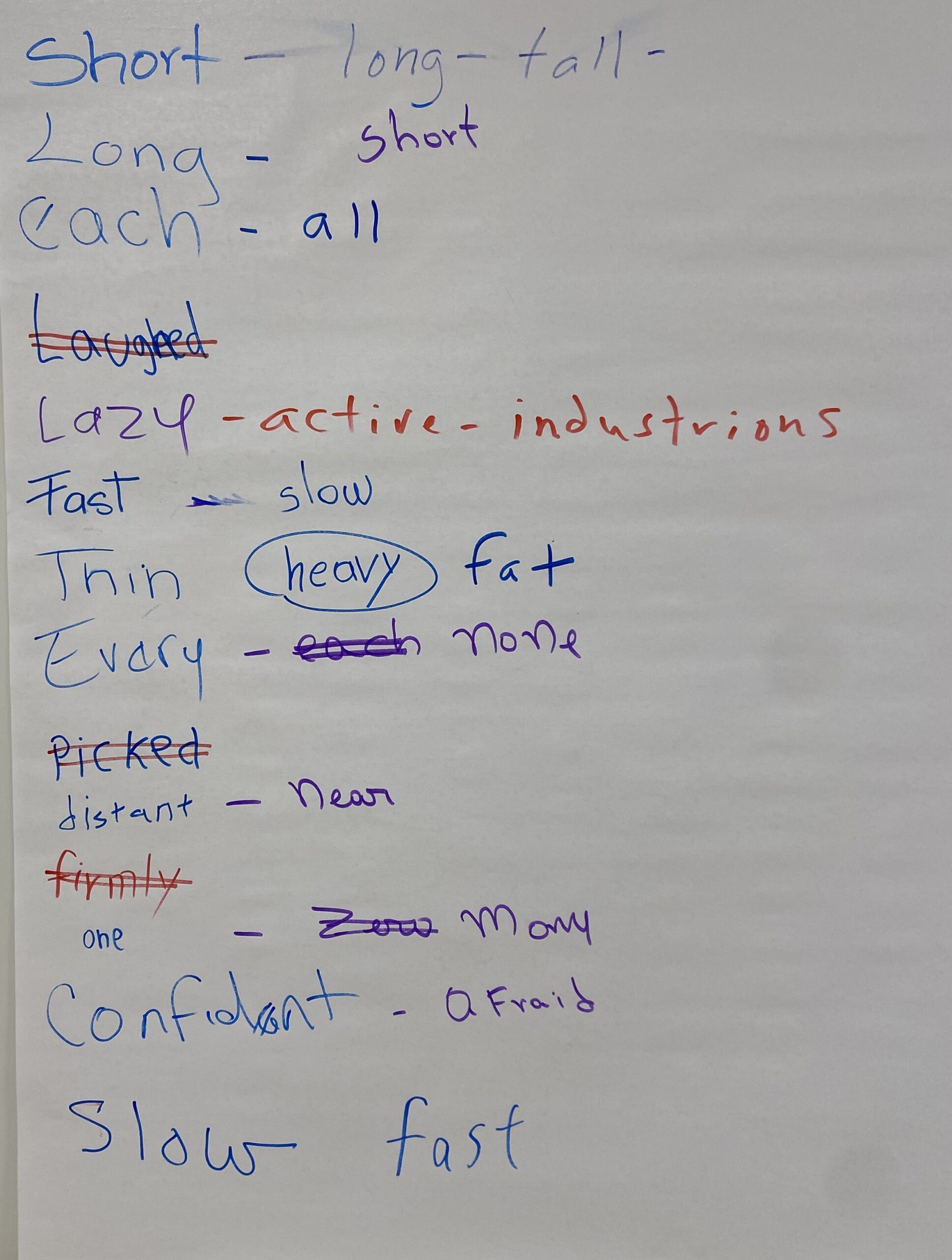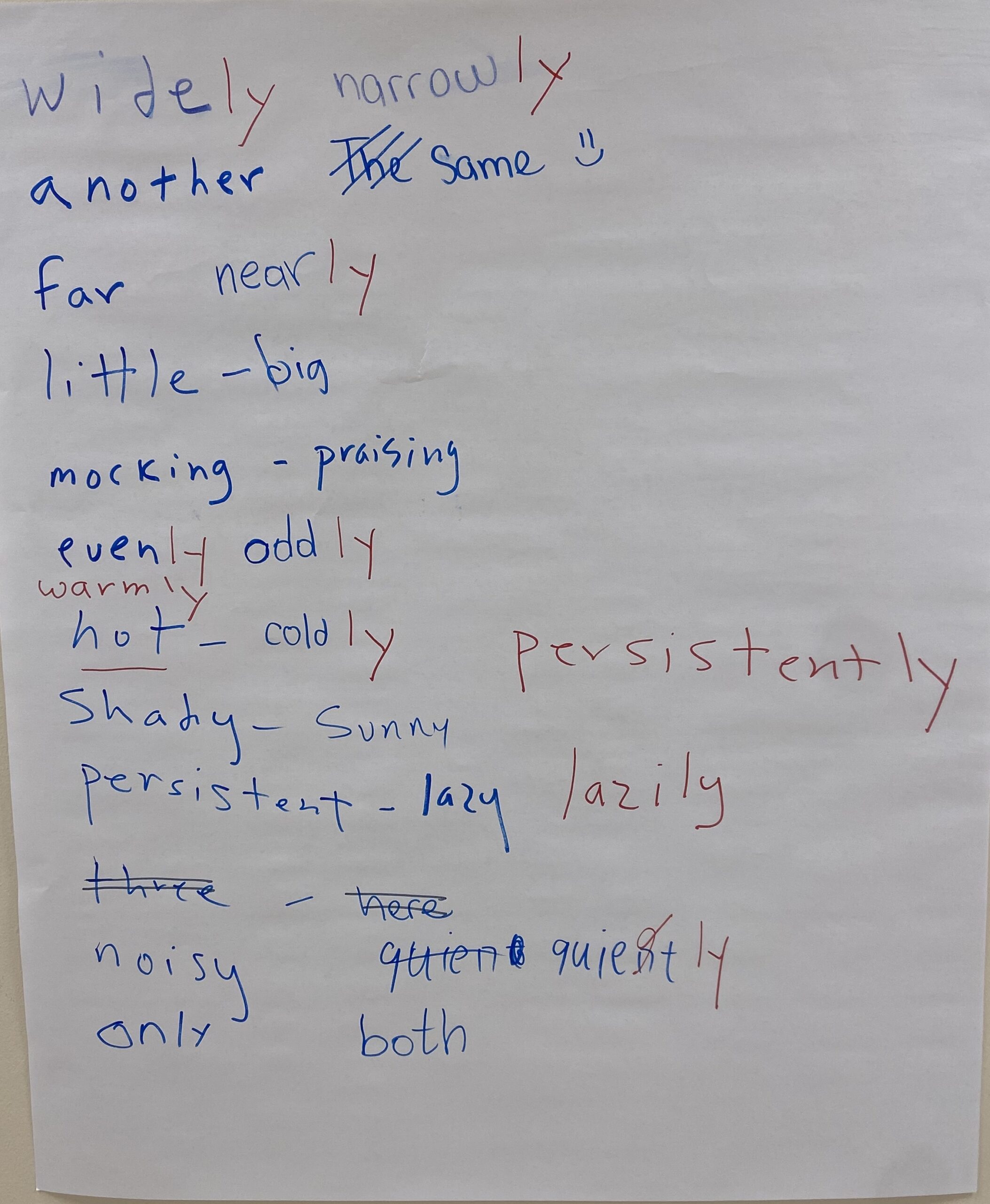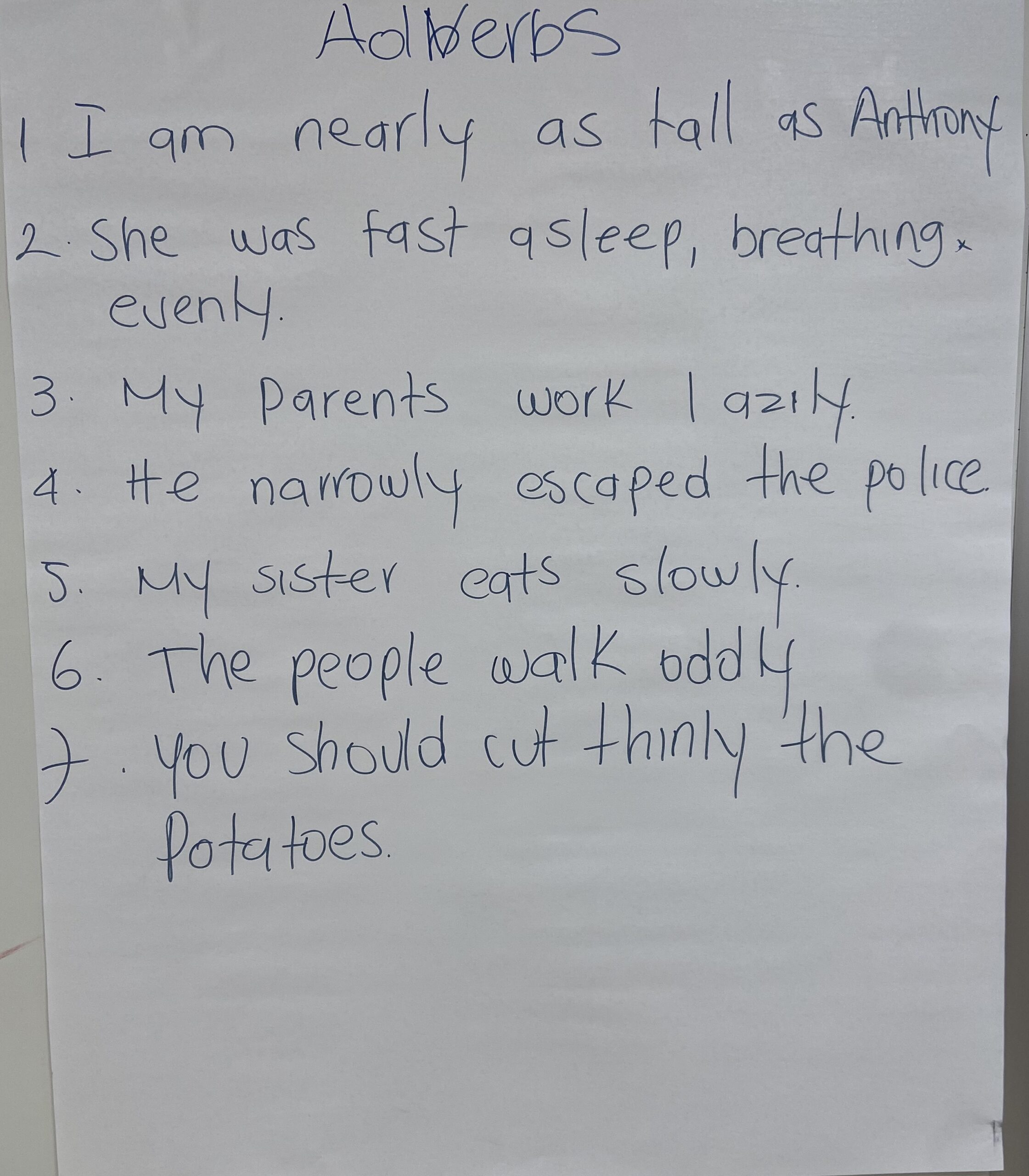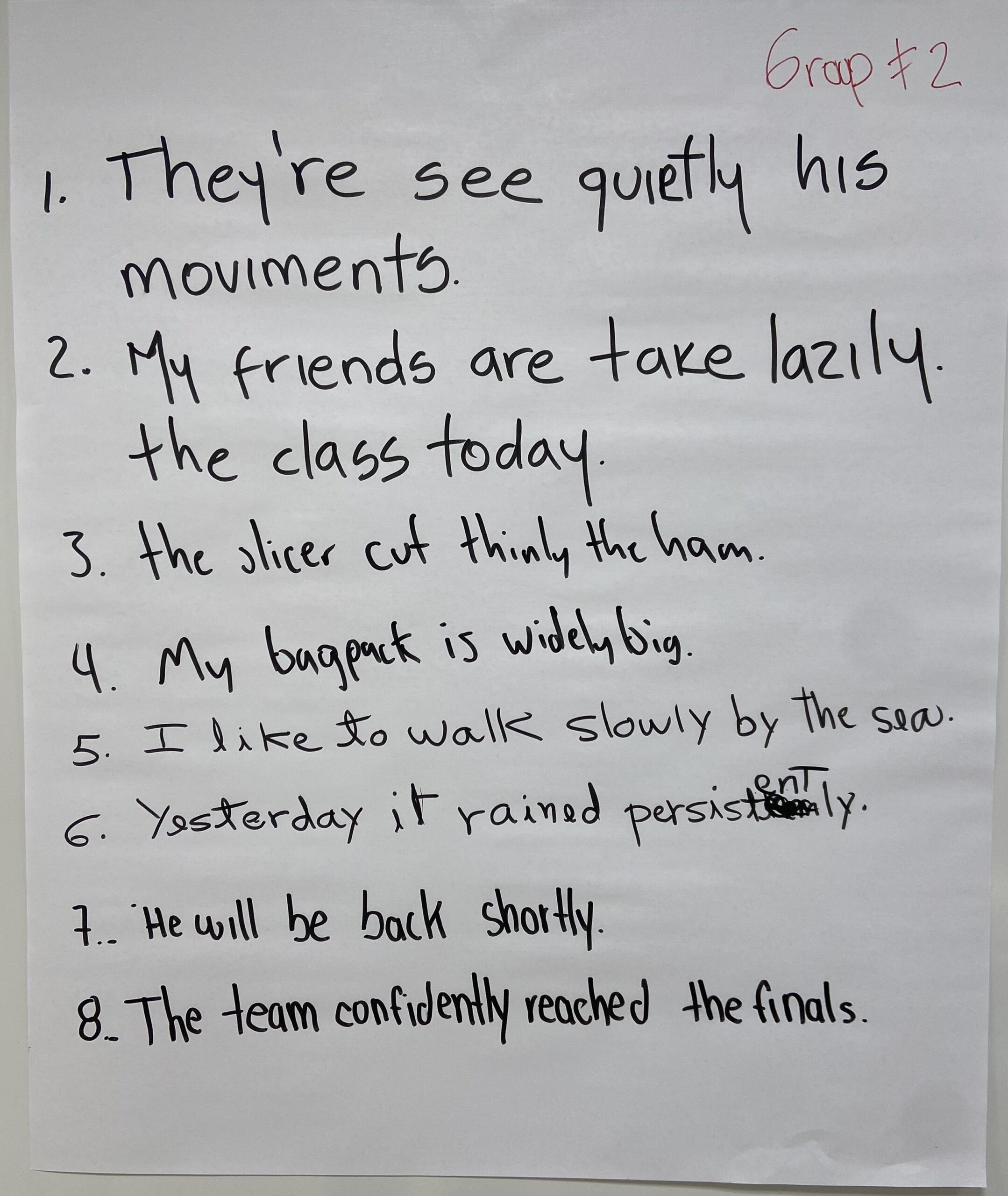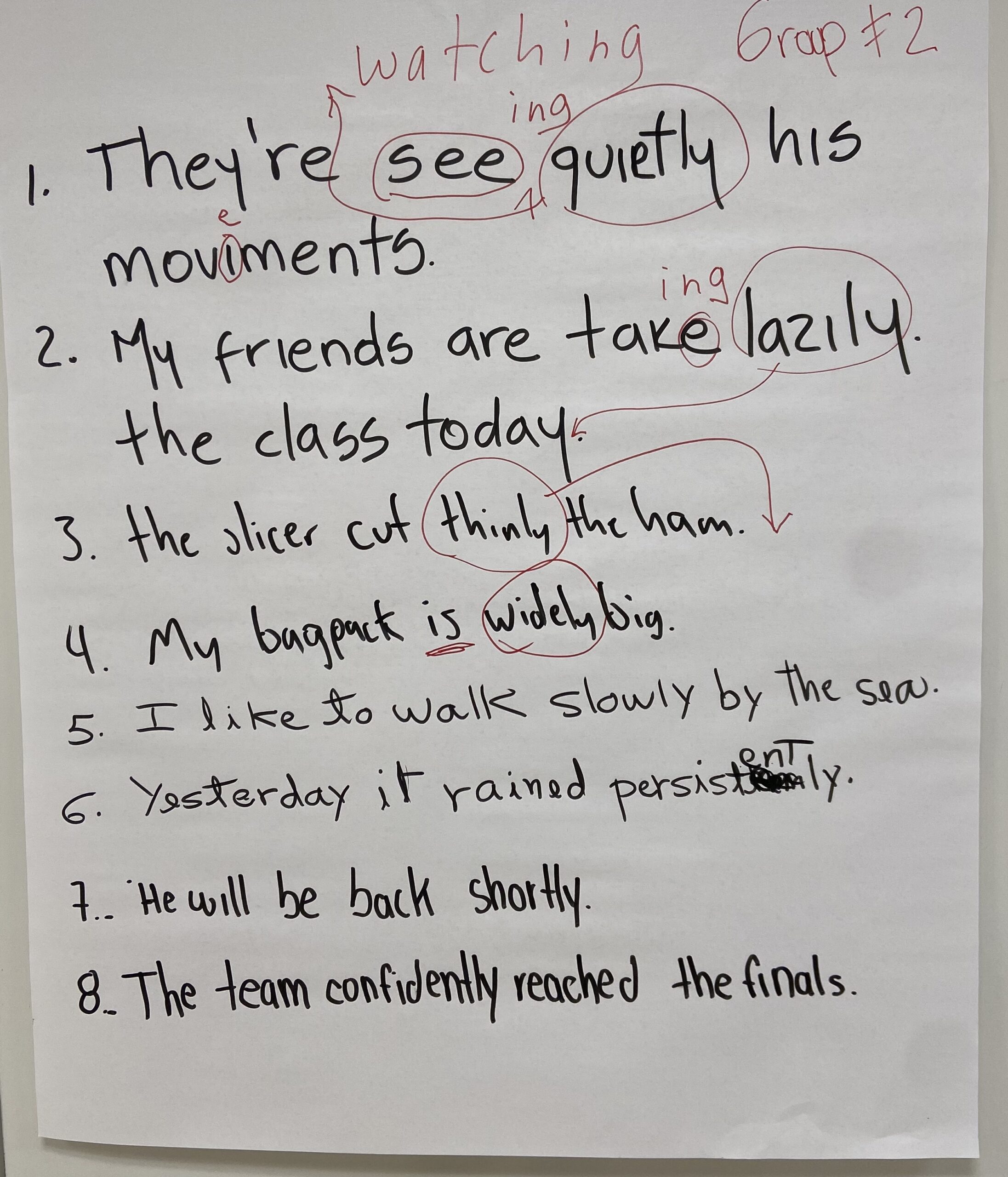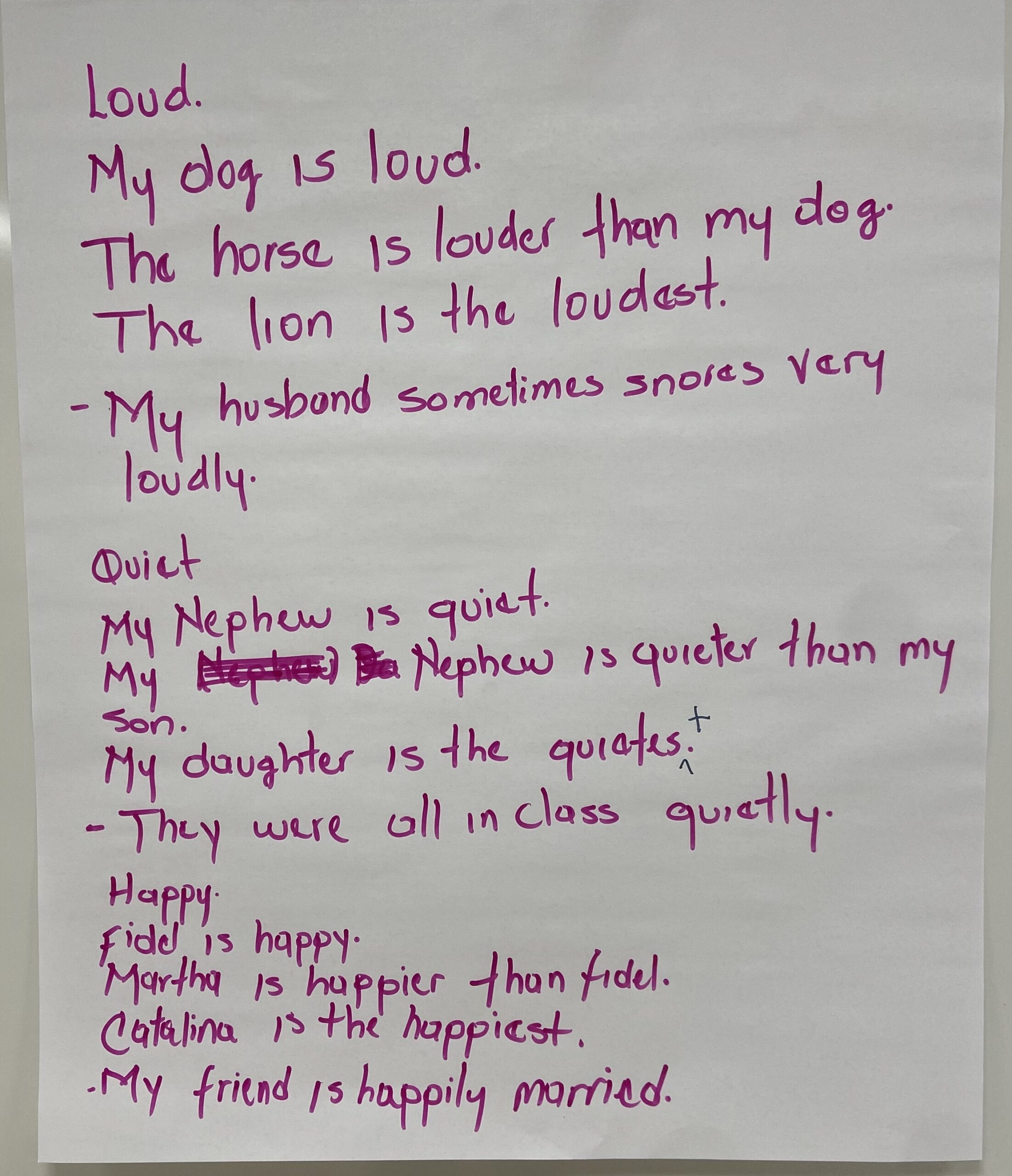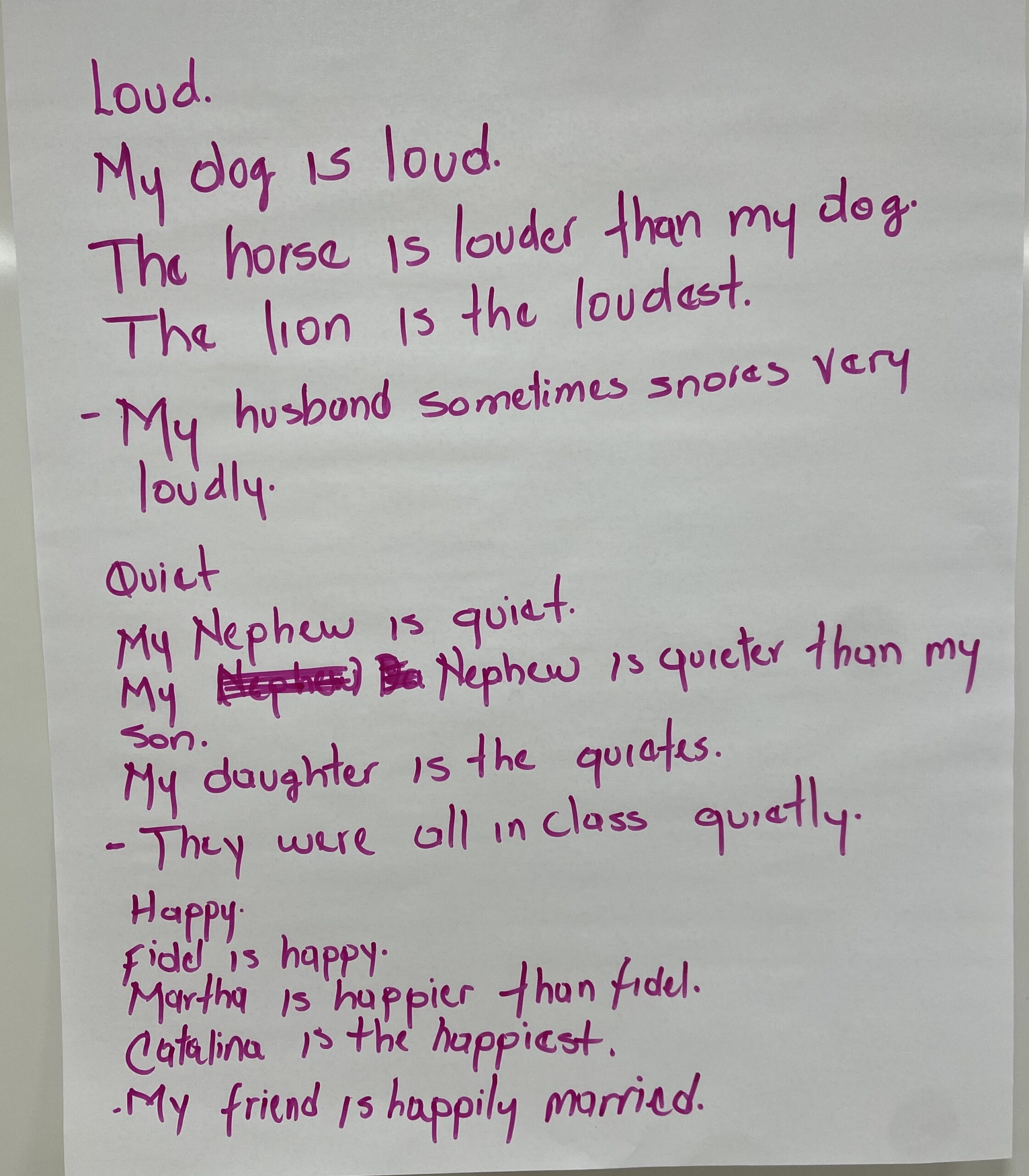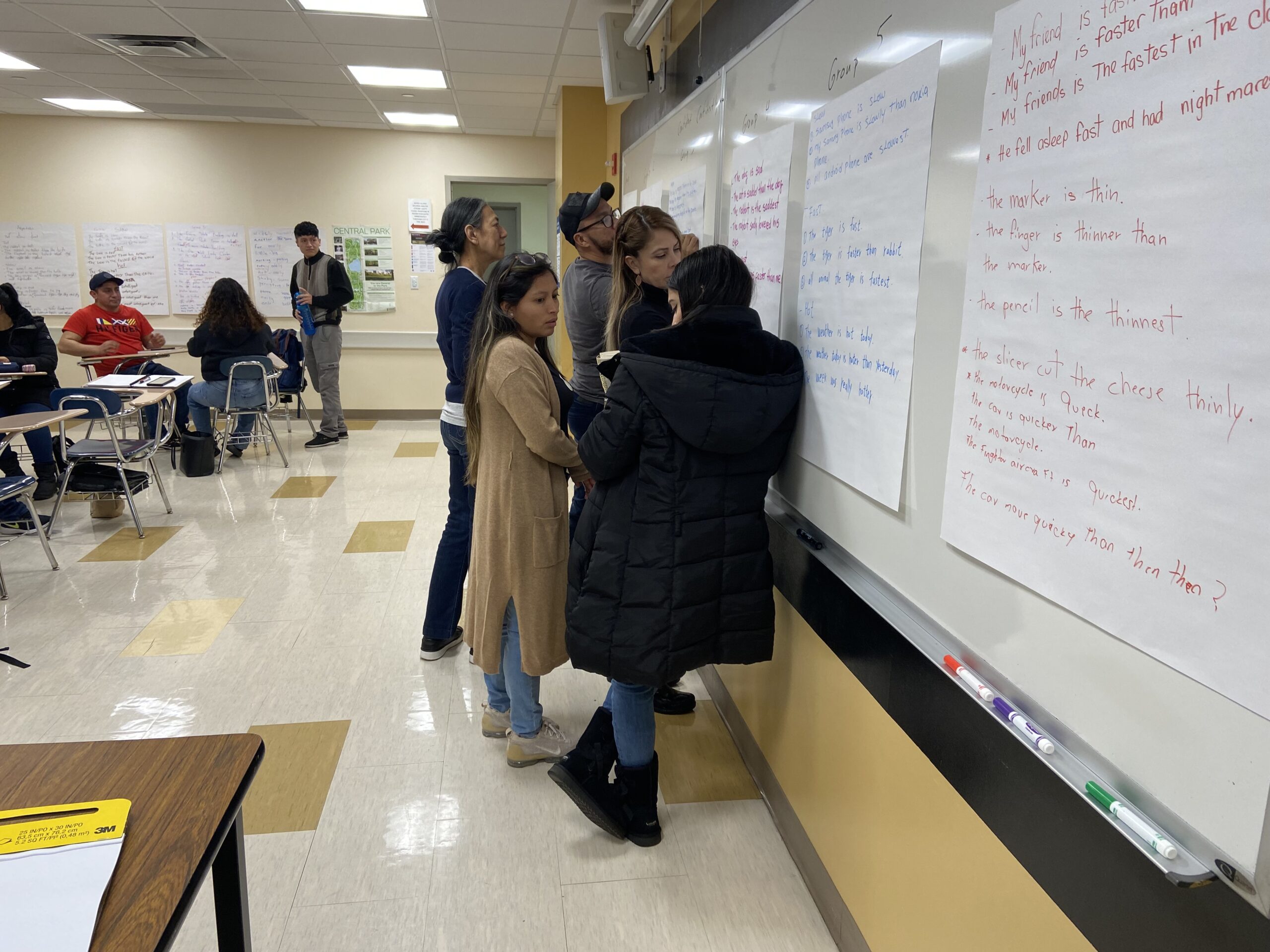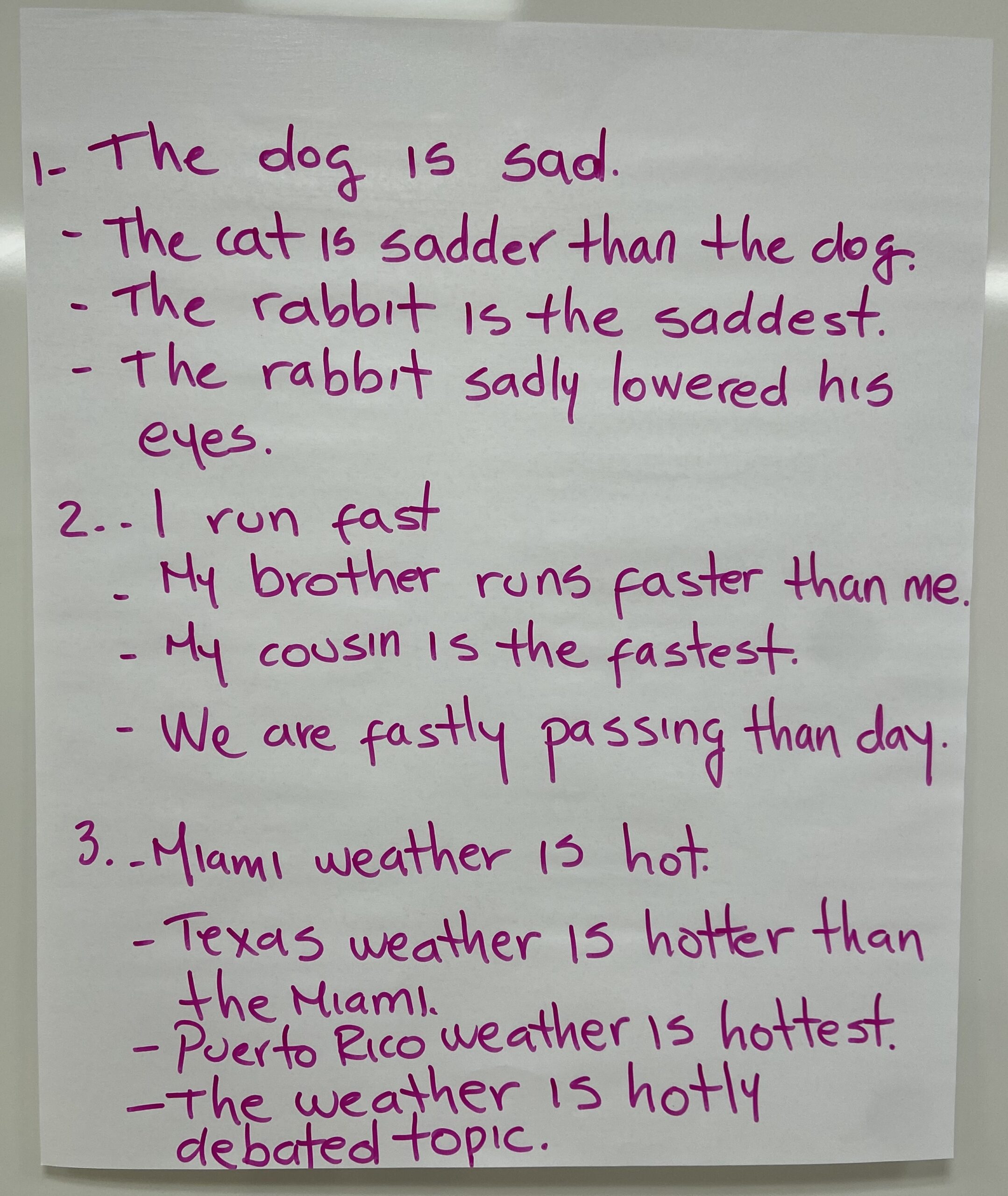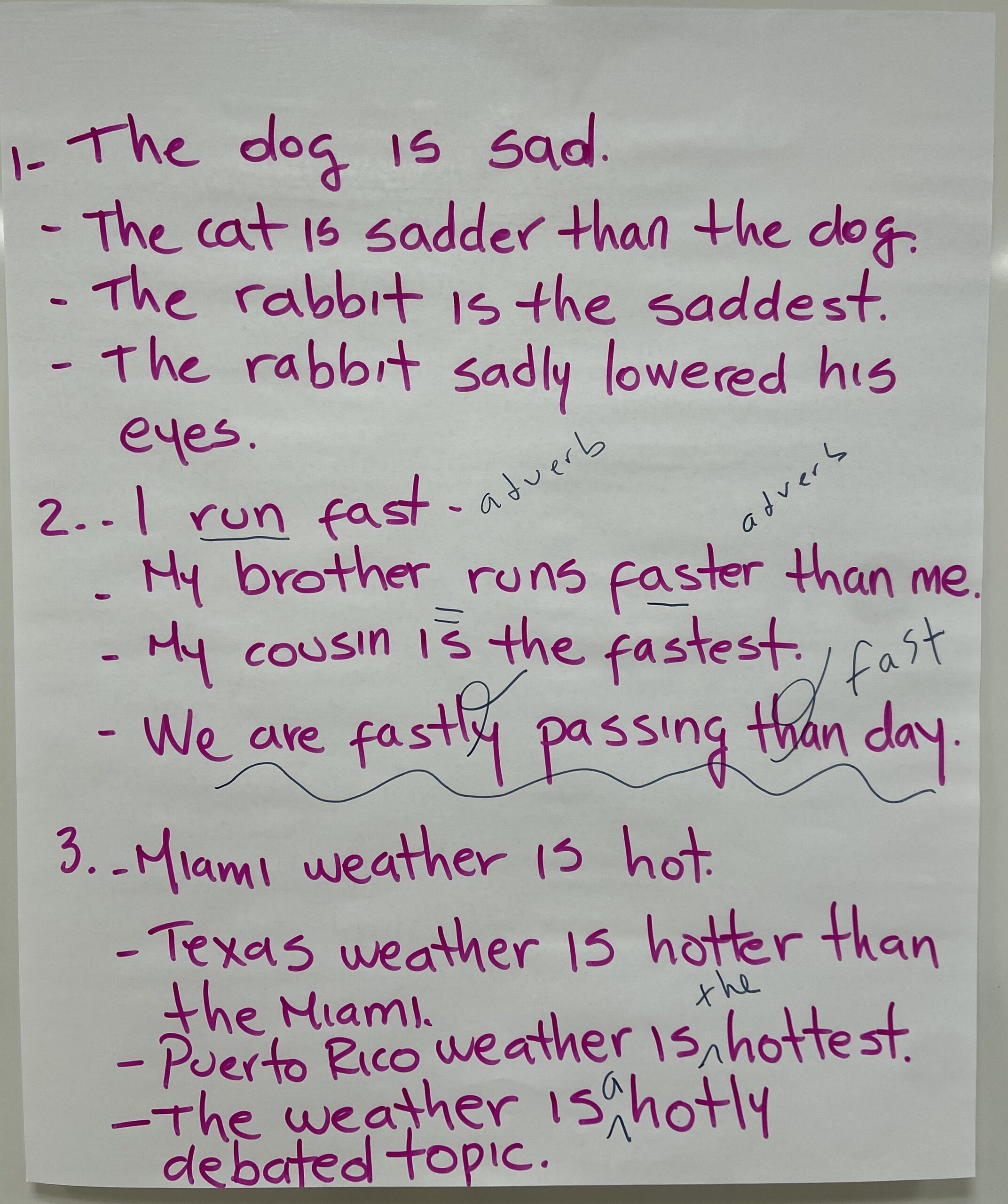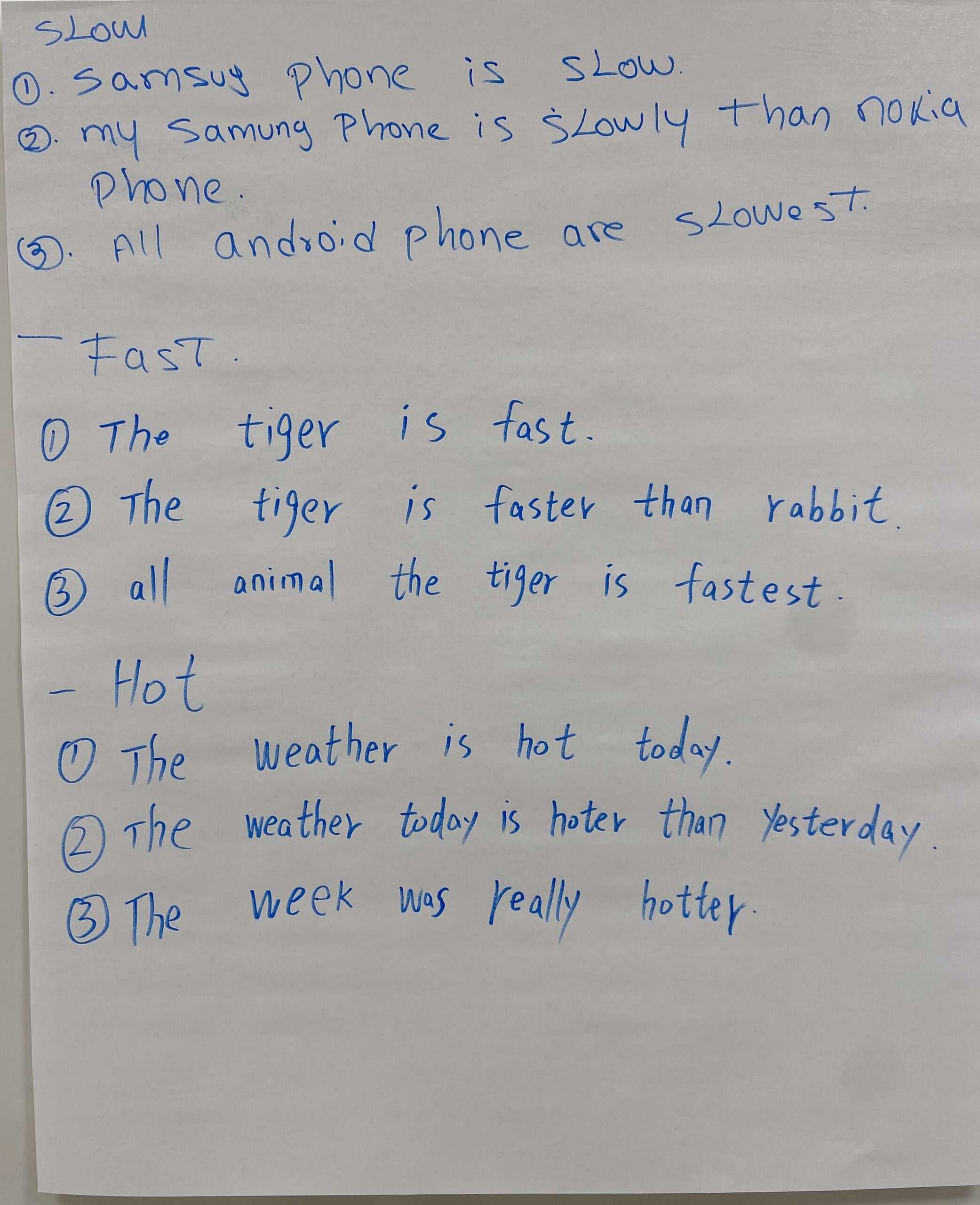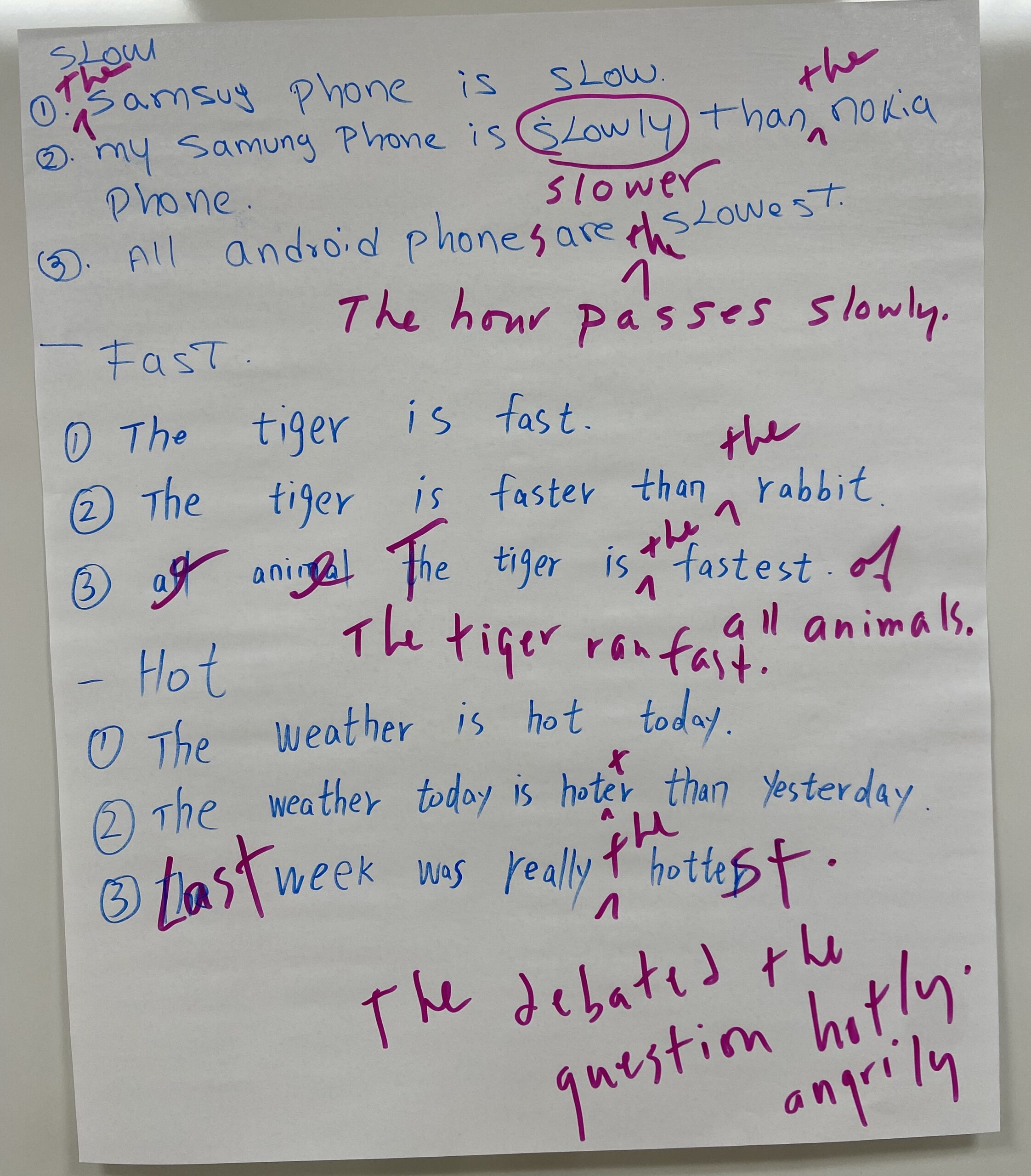Objective:
Students will be able to recognize an adjective, and know its three forms: positive, comparative and superlative. They will also be able to recognize adverbs.
Method:
Groups of three
Materials:
Handout: “The Rabbit and the Turtle”
Handout: Adjective Activities
Handout: Adverb Activities
Newsprint and markers
PDF with the story and all activities included:
Adjectives and Adverbs PDF
…
Lesson Development:
1. Looking for Adjectives. Groups look for adjectives in the story, “The Rabbit and the Turtle.” They write the adjectives they find on a newsprint that the teacher has hung up. Once an adjective is on the list, no other student can list it. When the students think they have added all the adjectives that are in the story, the class, with the teacher as guide, look at the list and correct for mistakes.
Be sure there are no nouns, verbs, or adverbs on the list. Only adjectives!
To the teacher: It can be fun to have a little contest to see which group can find the most adjectives in the story. You may want to check out my post, “ESL Lesson: Parts of Speech.”
…
…
2. Opposites. After the adjectives are listed on newsprint, let the class come up with opposites. Examples: long/short, wide/narrow, and one/many.
3. Adjective with a noun. Using the list of adjectives and their opposites as a prompt, groups come up with nouns that can go with the adjectives. Examples: happy child, narrow road, and short story.
The class needs to know that adjectives help to describe or modify a noun, and that they are in front of the noun: angry rabbit not rabbit angry.
Make sure that the class creates a good number of these. Each group should create at least ten examples.
4. The three forms: positive, comparative, and superlative. First, some teacher talk. The teacher hands out some activities for adjectives. Here are the two handouts which are available on the PDF at the beginning of this lesson.
…
With the handouts above, the class learns about the positive, comparative, and superlative forms of adjectives. The comparative adjective compares two things:
…..The rabbit is faster than the turtle. The fox and the rabbit are faster than the turtle.
The superlative adjective tells us who has the most of a certain quality: the shortest, the longest, the fattest, the smartest:
…..The turtle is the slowest and the rabbit is the fastest.
Groups pick out a dozen or so favorite adjectives and write their forms, taking note that adjectives with three or more syllables use more and most. You may model:
…..fast, faster, fastest
…..confident, more confident, most confident.
…
…
5, Part One: Adverbs. This activity also starts with some teacher talk and a handout. The answers to the exercise above are on the PDF found at the beginning of this lesson.
Students realize that most adjectives can become adverbs when they slightly change their forms by adding an ly at the end:
…..I’ll be there in a short time. I’ll be there shortly.
Sometimes they don’t change:
…..The fast rabbit ran. The rabbit ran fast.
And sometimes they change entirely:
….She is a good singer. The singer sang well.
On the newsprints already created for adjectives, the students, working in groups, add adverb forms that come from the adjectives they already written.
5, Part Two: Sentences with adverbs. Students choose seven adverbs they have discovered from the adjectives, and write seven sentences using the adverbs. They write these on newsprint, hang them up, and the whole class, each student with a marker, goes around reading all the sentences and correcting where they think there is a mistake. At the end, the teacher checks all the work for any final corrections.
6. Review: Writing sentences with adjectives and adverbs. The teacher gives the students another handout. This handout is available on the PDF above.
Using the list of adjectives and adverbs as a prompt, groups create sentences using the positive, comparative and superlative forms of three adjectives, and one sentence using the adverb. That’s twelve sentences in all. Below is an example of four:
…..1. Philadelphia is far.
…..2. Baltimore is farther than Philadelphia.
…..3. Washington D.C. is the farthest.
…..4. I walked very far today.
Groups write their sentences on newsprint. Have a student, acting as teacher, ask the class if the sentences are correct and let the student make corrections with directions from the class. The teacher takes a backseat here, but does gives directions when needed.
- Adjectives with nouns
- Adjectives with nouns
